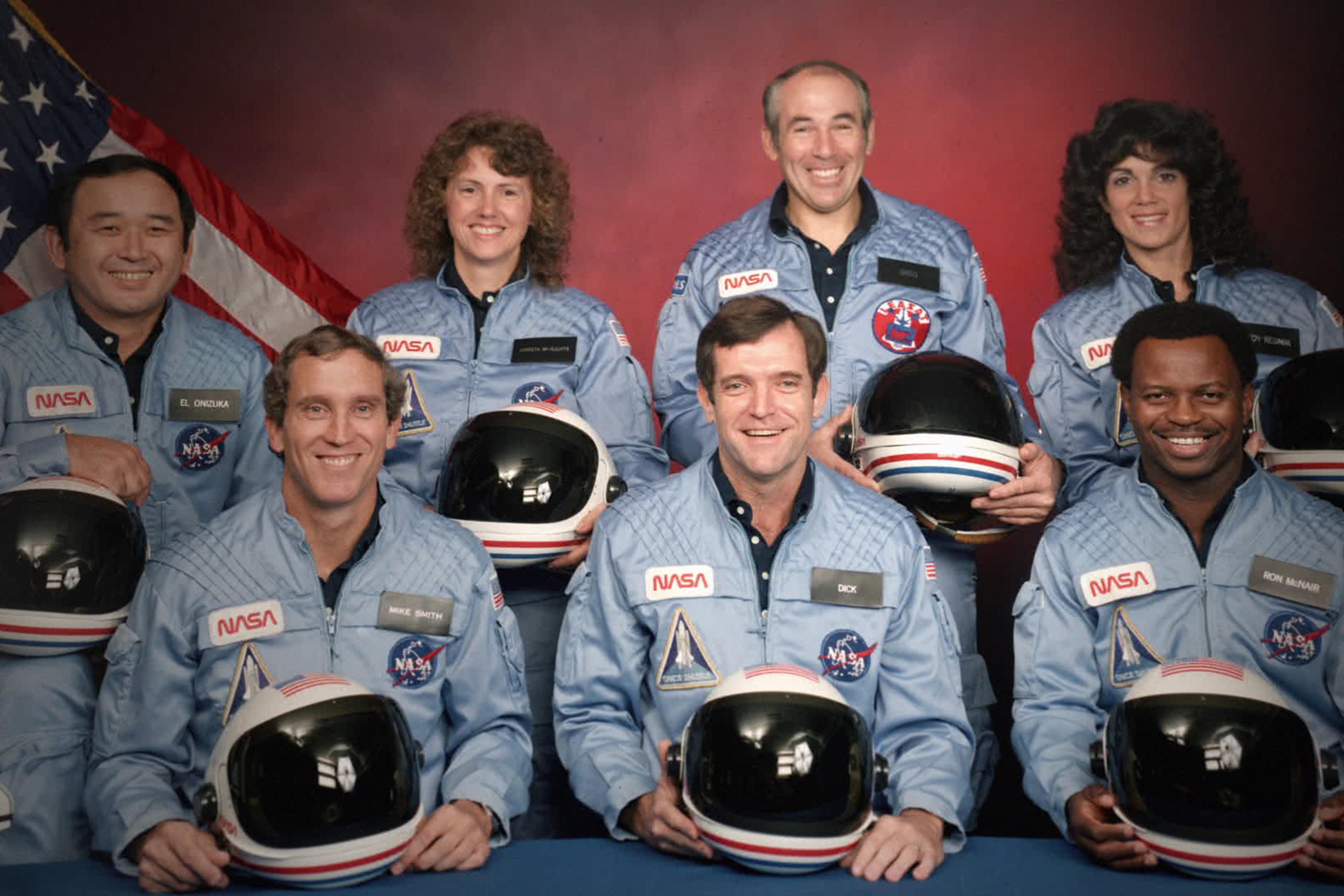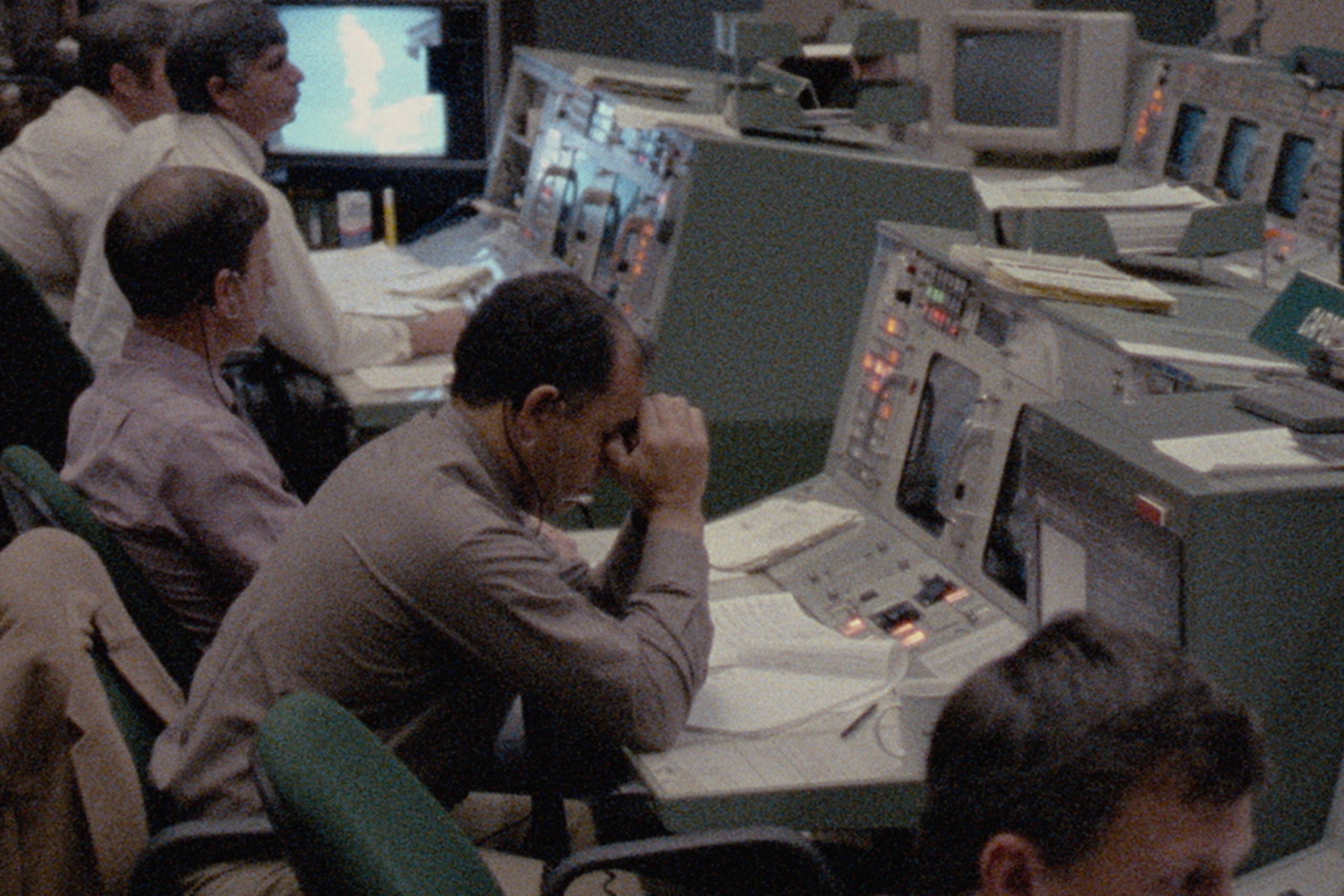Before 9/11, the biggest national expression of grief in my lifetime took place on January 28, 1986. That was when seven astronauts, including a teacher, Christa McAuliffe, boarded the space shuttle Challenger, took off and, about a minute later, died in a horrible fireball explosion. National tragedies aren’t all the same, though, and in subsequent years, that disastrous launch, although not forgotten, seems to have receded from the cultural memory. Partly, that’s probably because of more recent events like the 2001 terror attacks. But I also suspect that Challenger permanently changed how a lot of people felt about NASA, and space travel in general. Suddenly, neither of them seemed so alluring.
The Netflix docuseries Challenger: The Final Flight looks back at the events that led up to that explosion and its aftermath. Over four episodes, directors Daniel Junge and Steven Leckart provide interviews with several key participants — including members of the deceased astronauts’ families — as well as archival materials to suggest what a blow to America’s psyche this disaster was, to say nothing of the loss of life that occurred. If a rousing documentary like Apollo 11 shows American know-how at its best — celebrating logic, science and technological advancement — The Final Flight is what happens when the country (and especially NASA) got too cocky for its own good.
The Challenger mission wasn’t so much about studying the cosmos as it was a well-intentioned PR move. After NASA’s triumph in 1969 getting a man on the moon, the program faced the inevitable letdown that occurs after achieving such an impressive feat. For the next several years, even though NASA had moved from the dinky Apollo capsules to the majestic space shuttle, there was a lack of a wow factor. Once you’ve made it to the moon, what’s so exciting about carrying satellites into orbit around the Earth?
As The Final Flight explains, that’s when NASA hit upon the idea of sending a civilian on a forthcoming flight — giving an ordinary American the opportunity to experience the wonder of space travel. The Reagan administration announced that it would be a teacher — an everyday hero — who would get a seat on the next Challenger mission, and Junge and Leckart effectively illustrate what a big deal that news was. Indeed, there was a nationwide contest in which teachers from across the country applied, with 10 finalists competing for the honor. (I remember the kids in my grade school were very excited about the prospect of nominating our teacher for the job. How cool would it be to see Mrs. Henderson in a spacesuit?) Even if NASA wasn’t as popular as it had once been, the idea of a civilian — someone just like you or me — being part of our country’s hallowed space program helped reenergize the public’s excitement for interstellar exploration.
When McAuliffe, a New Hampshire high school teacher, was selected, she was set to be part of a flight crew that was impressively diverse, including female engineer Judith Resnik, Black physicist Ronald McNair and Japanese-American engineer Ellison Onizuka. One of The Final Flight’s most interesting early revelations is that NASA, after the Apollo missions, decided that it needed to broaden its pool of astronauts beyond white men. The Challenger crew was a direct result of that progressive agenda, which began in the late 1970s and proudly showed the world that even someone without a science background, like McAuliffe, could have the Right Stuff.

That expression, of course, came from journalist Tom Wolfe, who was as important as anyone who was actually part of America’s space program in selling the public on the idea that there was something heroic, noble, important about this endeavor. That, paired with President John F. Kennedy’s pledge that we would make it to the moon by the end of the 1960s — a vow that the country worked hard to honor after his assassination — boosted America’s spirits during the Cold War. But what The Final Flight makes plain is that NASA’s determination to succeed in that quest ended up leaving the organization with an inflated sense of its own greatness. Early on the docuseries, the adrenalized strains of Neil Diamond’s “America” play on the soundtrack as a space shuttle safely lands in the California desert in the early 1980s while well-wishers cheer and wave flags. Back then, NASA was like your favorite sports team, inherently infused with all that is righteous and good. NASA couldn’t possibly do anything wrong, because America never does anything wrong.
That arrogance would years later set the stage for the Challenger tragedy, and The Final Flight does a good job, in a non-tawdry way, of building up a sense of dread as we learn how NASA overlooked or downplayed small malfunctions that had occurred during earlier launches. This docuseries will be the introduction for a lot of viewers to Morton Thiokol, which developed the rocket boosters that propelled the space shuttle into orbit. We hear from several high-ranking executives and engineers who discuss the fact that, starting in the late 1970s, it was apparent that the booster rockets had a potentially fatal flaw: The O-rings that served as the connective tissue between the booster’s different sections could erode, allowing fuel leaks. It wasn’t a question of if but when.
Looking at Thiokol executives, still gripped by guilt years later, even though some of them tried to raise concerns at the time, you see how regret registers on a face permanently. There are a lot of faces like that in The Final Flight. Tragedies that could have easily been prevented are the most crushing of all.
Although The Final Flight devotes a fair amount of time to McAuliffe, we also learn about the other six astronauts, hearing from spouses and family members. Their remembrances are warm and happy, but as we get closer to recounting the actual catastrophe, there are still a lot of tears and anger. June Scobee Rodgers is especially touching as she talks about her husband Dick Scobee, who was the mission commander, and explains how she had to teach herself to forgive the people who allowed Challenger to launch, even though the cold temperatures that fateful morning made the O-rings especially brittle.
“You go through anger. You go through resolution,” she says at one point. “You go through ‘They’re in a better place.’ You can think away anything. But it was hard to forgive. There were still those times that I had to stop and physically say to myself, ‘I forgive those people. We need to forgive those people. We need to move on.’” A few other wives recall assuming that, despite the massive explosion they’d just seen, their husbands were going to be okay. After all, astronauts train for every contingency. Maybe they’d prepared for this, too.
That’s an incredibly naive reaction, of course, but totally understandable in the immediate aftermath of the unthinkable — they were in denial because the reality was too crushing to comprehend. That naiveté extended to the higher-ups in NASA, whose desire to keep their missions running on a tight schedule (in order to justify their massive Congressional budget) blinded them to the safety of their astronauts. The heroic rescue of the Apollo 13 crew, which was later turned into an Oscar-winning Tom Hanks drama, seemed to convince NASA that they could handle anything. Much like 9/11, the Challenger explosion wasn’t just heartbreaking because of the deaths — it struck at the country’s morale and sense of itself. It was a horrible wakeup call that even America could fail.

The Final Flight’s final episode focuses on the investigation into what went wrong, with Reagan advising the commission not to be too hard on NASA. (As New York Times reporter David Sanger puts it, the president’s attitude was “They’re national heroes. We’re going to need them. They’re going to have to launch again.”) But Reagan’s wish wasn’t granted after it became clear that there had been a coverup and that NASA would need to be publicly reprimanded.
All of this is duly compelling — and watching the dead’s loved ones cry all over again is heartbreaking — but what The Final Flight doesn’t quite come out and say is that, although subsequent space shuttles launched over the next two decades, the excitement and awe around NASA was never the same. A fundamental trust had been broken, and in America, we just don’t like losers, no matter how much we love redemption stories.
But The Final Flight can’t be a redemption story — the docuseries reminds us that the 2003 Columbia disaster was also due to an error that NASA had been aware of. Challenger was meant to be another rousing moment in American aeronautical history. Instead, it was a monument to arrogance and denial. It’s to the filmmakers’ credit that they don’t try to soft-peddle that lingering sting. After all, that terrible day clearly still wounds those who lost someone in the tragedy.

